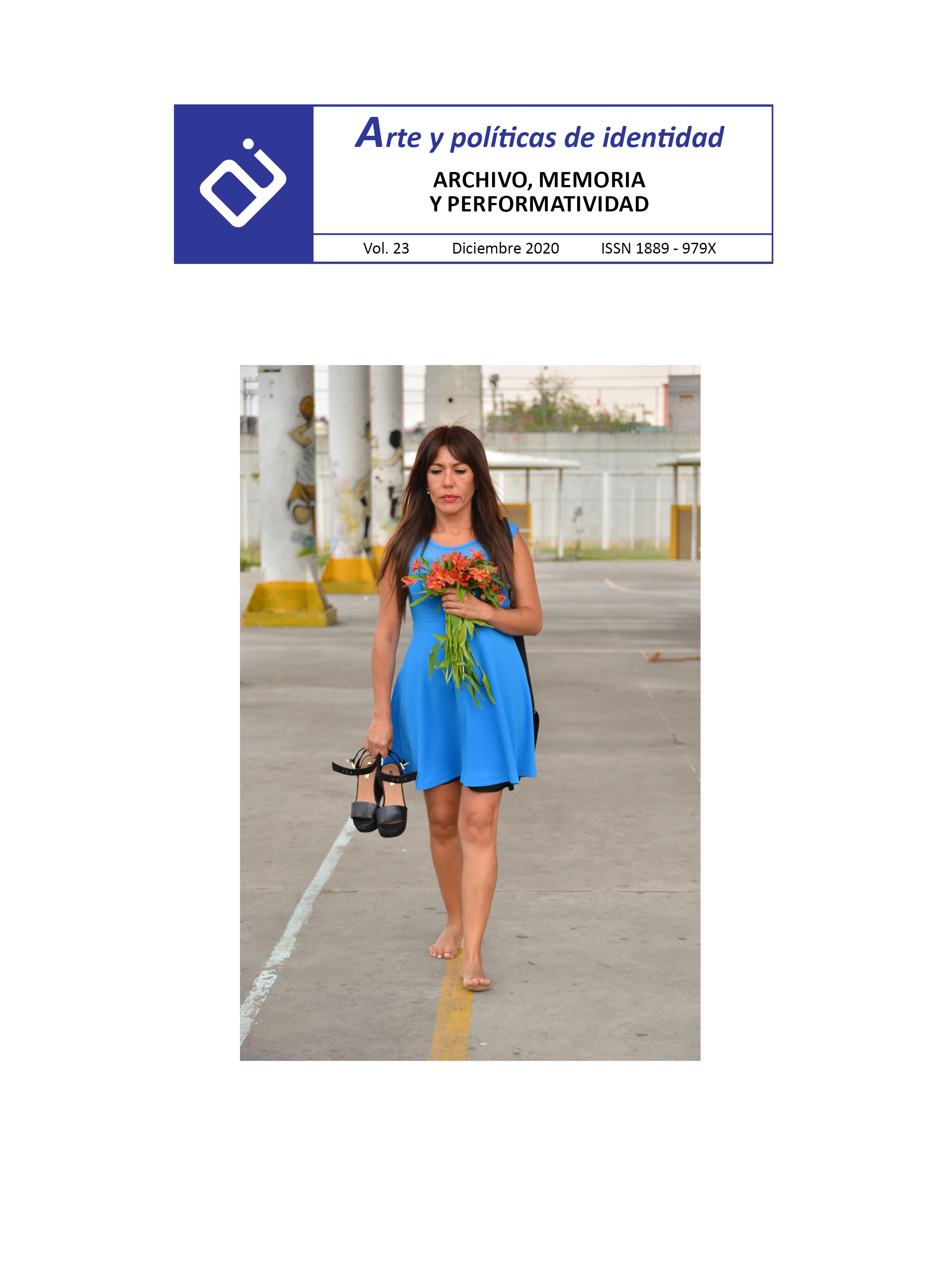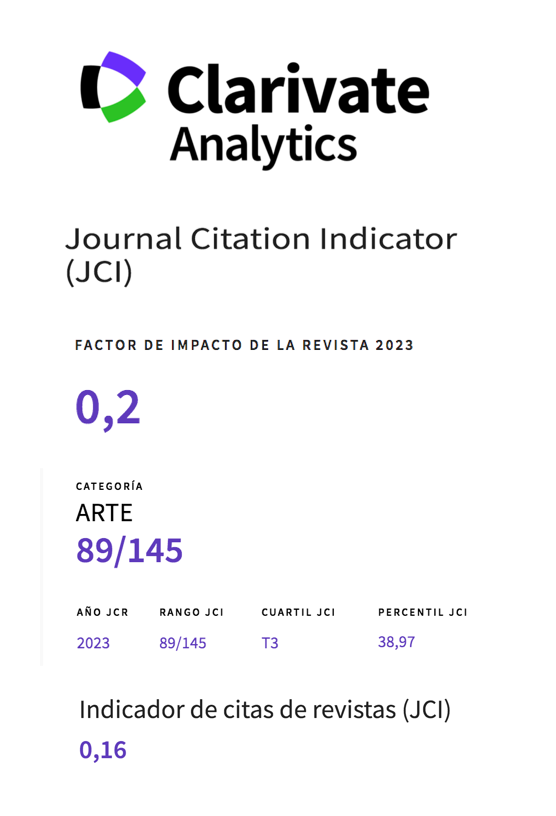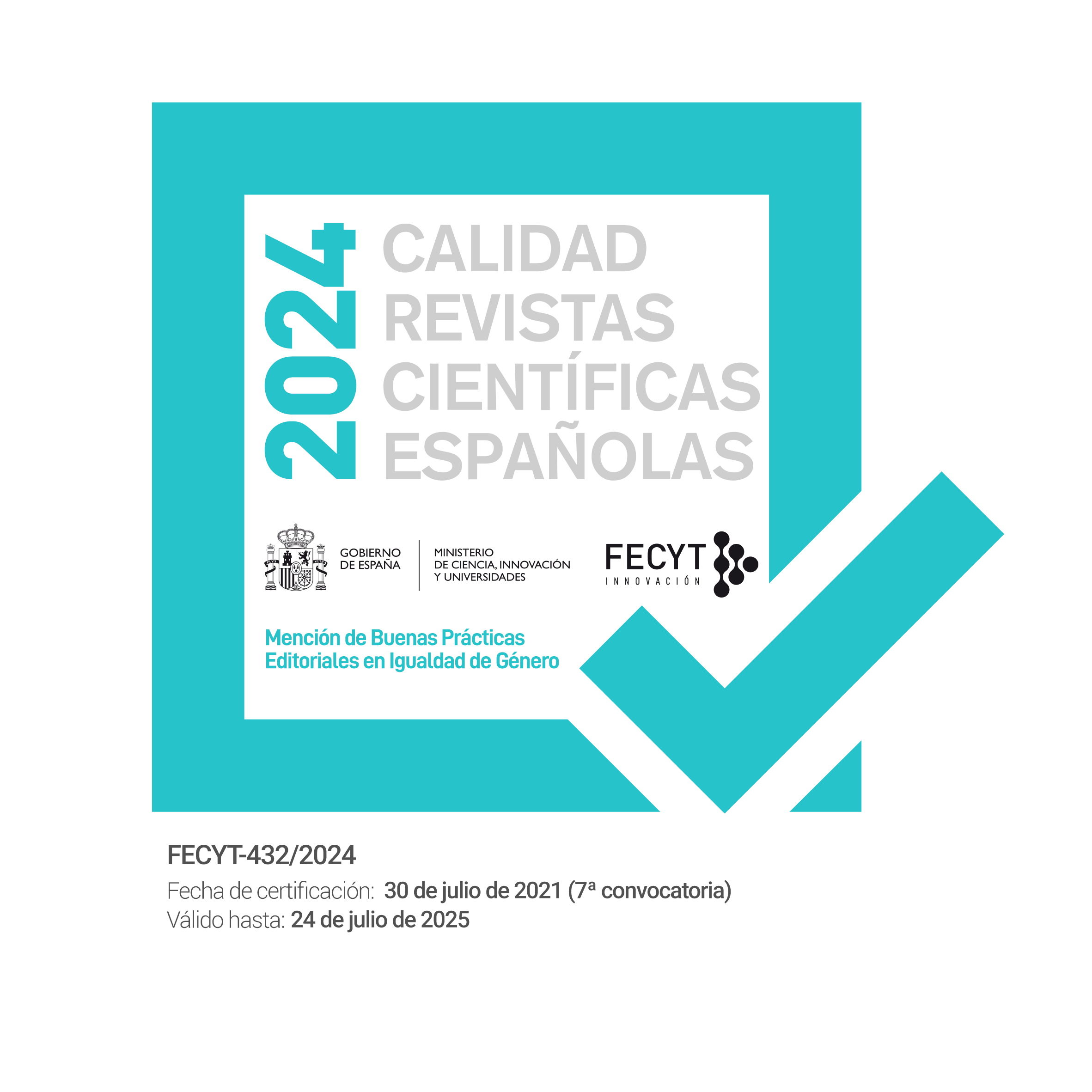The ‘silent apocalypse’ of contemporary art as transforming devices of consciousness for the repair of a degraded ecological memory
Abstract
As a symbolic gathering of conscience, every great artwork is a silent apocalypse that, with its significant impressions or interactions, can transform the social structure. Transfiguring the world through its spaces of representation, it is capable of acquiring a prophetic capacity that denounces situations in order to, as in the specific case offered here; restore the balance of ecosystems degraded by the footprint that human beings have printed on them. This same anthropocenic imprint, sponsored by the idea of progress that confers the utopia of unlimited growth proposed by the capitalist system, paradoxically could lead the human being to attend the end of his own species. For this reason, part of contemporary art has been extremely concerned about raising awareness in society and, thus, curbing the arrival of a catastrophic future scenario. Due to the urgency of this pressing situation, we complaints various complaints established in artistic practices to change the attitude of its spectators. To do this, we proposed two aspects here: that of works that show dystopian scenarios and that of other more activists which try to tackle the situation from specific environments.
Downloads
-
Abstract673
-
PDF (Español (España))574
References
Baquedano, S. y Donoso, C. (2018). Antropoceno y cambio climático: la ausencia de lo común en actividades y hábitos humanos que componen el ambiente. Revista Dilemas Contemporáneos: Educación, Política y Valores, año V, núm. 3.
Benjamin, W. (2008). Sobre el concepto de historia. En Obras, libro I, Vol.2, Madrid: Abada.
Berardi, F. (2016). Fenomenología del fin. Sensibilidad y mutación conectiva. Buenos Aires: Caja Negra.
Berardi, F. (2019). Futurabilidad. La era de la impotencia y el horizonte de la posibilidad. Buenos Aires: Caja Negra.
Crutzen, P. J. y Stoermer, E. F. (2000). The ‘Anthropocene’. Global Change Newsletter, 41, 17-18.
Didi-Huberman, G. (2011). Ante el tiempo. Historia del arte y anacronismo de las imágenes. Buenos Aires: Adriana Hidalgo.
Flys, C. (2018). En el principio era la palabra: la palabra y la creación de imaginarios ecológicos. En J. Albelda, J. M.Parreño y J. M. Marredo (Coords.), Humanidades ambientales. Pensamiento, arte y relatos para el Siglo de la Gran Prueba (pp. 182-200). Madrid: Libros de la Catarata.
Gandler, S. (2006). ¿Por qué el Ángel de la Historia mira hacia atrás? Sobre el concepto de historia en Walter Benjamin. Revista de história y estudios culturais, 3(3), 1.
Guattari, F. (1996). Las Tres Ecologías. Valencia: Pre-Textos.
Haraway, D. (2016). Staying with the Trouble: Making Kin in the Chthulucene. Drham: Duke University Press.
Head, L. (2014). Contingencies of the Anthropocene. Lessons from the ‘Neolithic’. The Anthropocene Review, 1(2), 1-13.
Jung, C. G. (1970). Arquetipo e inconsciente colectivo. Barcelona: Paidós.
Lamarche-Vadel, B. (1994). Entrevista de Joseph Beuys con Elizabeth Rona, octubre 1981. En Joseph Beuys (pp. 79-82). Madrid: Siruela.
Latour, B. (2014). Agency at the Time of the Anthropocene. New Literary History, 45(1), 1-18.
Marín Ruiz, C. (2018). Acerca de las vinculaciones del arte a la ecología. En J. Albelda, J. M. Parreño, J. M. y J.M. Marredo, (Coords.) Humanidades ambientales. Pensamiento, arte y relatos para el Siglo de la Gran Prueba (pp. 89-108). Madrid: Libros de la Catarata.
Moore, J. W. (ed.) (2016). Anthropocene or Capitalocene? Nature, History, and the Crisis of Capitalism. Oakland: PM Press.
Negri, T. (2000). Arte y multitudo. Ocho cartas. Madrid: Trotta.
Perniola, M. (2008). Del sentir. Valencia: Pre-textos.
Polak, F. (1973). The image of the future. Amsterdam: Elsevier Scientific.
Proudhon, J.-P. (1980). Sobre el principio del arte y su destinación social. Buenos Aires: Aguilar.
Raquejo, G. T. y Parreño, J. M. (eds.) (2015). Arte y ecología. Madrid: UNED.
Riechmann, J. (2005). ¿Cómo cambiar hacia sociedades sostenibles? Reflexiones sobre biomímesis y autoalimentación. Isegoría, 32, 95-108.
Riechmann, J. (2017). Ecosocialismo descalzo en el Siglo de la Gran Prueba. Viento Sur, 150, 49-58.
Santiago, E. (2016). Cuatro décadas perdidas. Los límites del crecimiento y sus escenarios de futuro. Revista de Occidente, 25, 49-75.
Spratt, D., Dunlop, I. (2019). Existential climate-related security risk: A scenario approach. Melbourne: Breakthough – National Centre for Climate Restoration. [Recurso en línea]. Disponible en: https://docs.wixstatic.com/ugd/148cb0_b2c0c79dc4344b279bcf2365336ff23b.pdf
Trischler, H. (2017). El Antropoceno, ¿un concepto geológico o cultural, o ambos? Desacatos, 54, 40-57.
Wagner, R. (2000). La obra de arte del futuro. Valencia: Universitat de Valencia.
Works published in this journal are subject to the following terms:
- The Service of Publications from the University of Murcia (publishing house) keeps the published works’ copyrights, and favors and allows the reuse of these works under the license indicated in point 2.
- Works are published in the journal’s online edition under the license Creative Commons Reconocimiento-NoComercial-SinObraDerivada 3.0 España(texto legal). They can be copied, used, disseminated, transmitted and publicly exhibited, as long as: i) the author and original source of publication are cited (journal, publishing house and work’s URL); ii) they are not used for commercial purposes; iii) the existence and specifications of this license are mentioned.
3. Conditions for auto-file. It is allowed and encouraged that authors share electronically their pre-print version (the pre-reviewed version) and /or post-print version (the reviewed and accepted version) of their Works before the publication, since it promotes its circulation and dissemination. RoMEO color: green.










